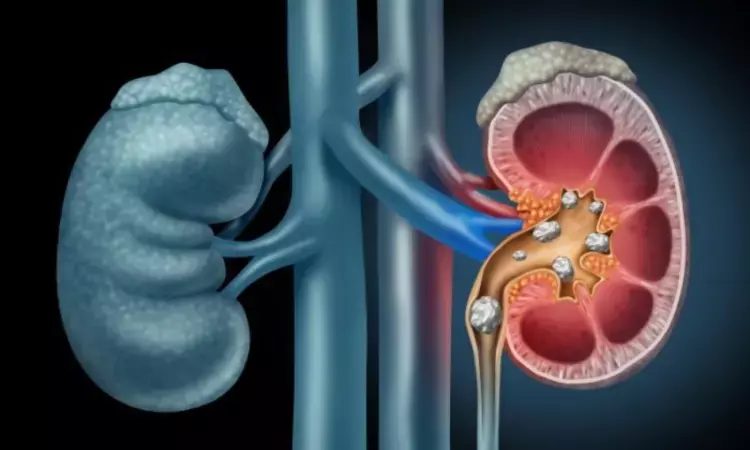- Home
- Medical news & Guidelines
- Anesthesiology
- Cardiology and CTVS
- Critical Care
- Dentistry
- Dermatology
- Diabetes and Endocrinology
- ENT
- Gastroenterology
- Medicine
- Nephrology
- Neurology
- Obstretics-Gynaecology
- Oncology
- Ophthalmology
- Orthopaedics
- Pediatrics-Neonatology
- Psychiatry
- Pulmonology
- Radiology
- Surgery
- Urology
- Laboratory Medicine
- Diet
- Nursing
- Paramedical
- Physiotherapy
- Health news
- Fact Check
- Bone Health Fact Check
- Brain Health Fact Check
- Cancer Related Fact Check
- Child Care Fact Check
- Dental and oral health fact check
- Diabetes and metabolic health fact check
- Diet and Nutrition Fact Check
- Eye and ENT Care Fact Check
- Fitness fact check
- Gut health fact check
- Heart health fact check
- Kidney health fact check
- Medical education fact check
- Men's health fact check
- Respiratory fact check
- Skin and hair care fact check
- Vaccine and Immunization fact check
- Women's health fact check
- AYUSH
- State News
- Andaman and Nicobar Islands
- Andhra Pradesh
- Arunachal Pradesh
- Assam
- Bihar
- Chandigarh
- Chattisgarh
- Dadra and Nagar Haveli
- Daman and Diu
- Delhi
- Goa
- Gujarat
- Haryana
- Himachal Pradesh
- Jammu & Kashmir
- Jharkhand
- Karnataka
- Kerala
- Ladakh
- Lakshadweep
- Madhya Pradesh
- Maharashtra
- Manipur
- Meghalaya
- Mizoram
- Nagaland
- Odisha
- Puducherry
- Punjab
- Rajasthan
- Sikkim
- Tamil Nadu
- Telangana
- Tripura
- Uttar Pradesh
- Uttrakhand
- West Bengal
- Medical Education
- Industry
New AI system helps in rapid diagnosis of urolithiasis in CT with high precision: Study

A novel artificial intelligence (AI) system was created by Jin kim and team to identify kidney stones in CT (computed tomography) scans with speed and accuracy, the findings of this work were published in the recent issue of European Urology Focus journal.
A prominent cause of acute renal colic is urolithiasis which has been more widespread in the recent years. The frequency of emergency department (ER) visits for renal colic caused by urolithiasis is correlated with this growing trend. It is crucial to diagnose urolithiasis as soon as possible to avoid major side effects including urosepsis and hydronephrotic kidney damage.
This study aimed to create an artificial intelligence system that would use sophisticated deep learning to detect urolithiasis in computed tomography pictures. This system would be able to calculate the properties of the stone like volume and density in real time, which is crucial for making treatment decisions. In ER circumstances, the system's performance was compared to that of urologists.
The data set included axial CT scans for patients who had urolithiasis surgery between August 2022 and July 2023. The data set was split into three categories as training (70%), internal validation (10%) and testing (20%). Labelimg for ground-truth data was used to annotate stones by two urologists and an AI specialist. The RTX 4900 graphics processing unit (GPU) acceleration was applied to the YOLOv4 architecture during training. 100 individuals with probable urolithiasis had their CT pictures examined for external validation.
- A total of 39,433 CT scans were used to train the AI system and 9.1% of these showed good results. At its height, the accuracy of the system was 95%, with a positive-to-negative sample ratio of 1:2.
- The accuracy was steady at 95% in a validation set of 5736 pictures (482 positive). The majority of misses (2.6%) were uneven stones. And, the artifacts or calcifications were often the cause of false positives (3.4%).
- The accuracy was 94% when external validation was conducted using 100 CT scans from the emergency room. Also, the majority of instances that were overlooked were ureterovesical junction stones, which were not part of the training set.
- The AI system outperformed human specialists in speed by evaluating 150 CT images in 13 seconds as opposed to the assessment by urologists being 38.6 seconds and formal reading time of 23 hours.
Overall, the AI interpretation system employs a sophisticated deep-learning algorithm to detect urolithiasis in CT images and compute critical stone properties, this assists in the real-time determination of suitable care strategies.
Source:
Kim, J., Kwak, C. W., Uhmn, S., Lee, J., Yoo, S., Cho, M. C., Son, H., Jeong, H., & Choo, M. S. (2024). A Novel Deep Learning–based Artificial Intelligence System for Interpreting Urolithiasis in Computed Tomography. In European Urology Focus. Elsevier BV. https://doi.org/10.1016/j.euf.2024.07.003
Neuroscience Masters graduate
Jacinthlyn Sylvia, a Neuroscience Master's graduate from Chennai has worked extensively in deciphering the neurobiology of cognition and motor control in aging. She also has spread-out exposure to Neurosurgery from her Bachelor’s. She is currently involved in active Neuro-Oncology research. She is an upcoming neuroscientist with a fiery passion for writing. Her news cover at Medical Dialogues feature recent discoveries and updates from the healthcare and biomedical research fields. She can be reached at editorial@medicaldialogues.in
Dr Kamal Kant Kohli-MBBS, DTCD- a chest specialist with more than 30 years of practice and a flair for writing clinical articles, Dr Kamal Kant Kohli joined Medical Dialogues as a Chief Editor of Medical News. Besides writing articles, as an editor, he proofreads and verifies all the medical content published on Medical Dialogues including those coming from journals, studies,medical conferences,guidelines etc. Email: drkohli@medicaldialogues.in. Contact no. 011-43720751


